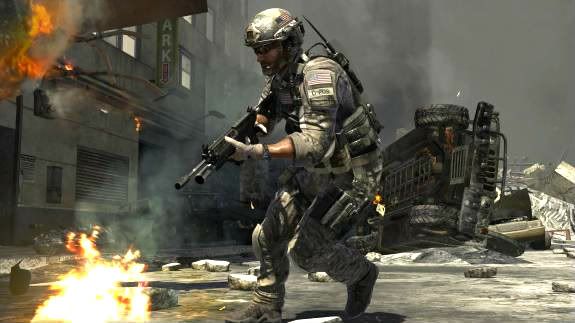This post has not been edited by the GamesBeat staff. Opinions by GamesBeat community writers do not necessarily reflect those of the staff.

Few things are as successful as the Call of Duty franchise. Activision has the strongest intellectual property in the gaming industry, and it seems that little will challenge the preeminent first-person-shooter series.
For players, certain types of experiences can get stale quickly. One needs to look no further than music games, skateboarding games, or minigame collections to see how hot genres can quickly bottom out.
While one could argue that COD remains in demand due to the popularity of first-person shooters, this notion doesn’t tell the full story.
If you look at the qualities of each title, a pattern emerges, and one cannot help but think that this was designed on purpose.
These characteristics are easily grouped into a couple of categories. Is the installment a safe hit or a risky, new venture? And what is the general theme?
Few can imagine any Call of Duty game to be risky. You could probably put the name and logo on anything and it will sell well. What I refer to here is the introduction of a new theme or setting. Is it something we haven’t seen before?
The second category has to do with the exact nature of the chosen theme. So far, we've seen three types of setups for COD games: World War 2, the Cold War, and modern warfare.
- Call of Duty — breakout hit
- Call of Duty 2 — safe hit, World War 2 theme
- Call of Duty 3 — safe hit, World War 2 theme
- Call of Duty 4: Modern Warfare — risky, modern-warfare theme
- Call of Duty: World at War — safe hit, World War 2 theme
- Call of Duty: Modern Warfare 2 — safe hit, modern-warfare theme
- Call of Duty: Black Ops — risky, Cold War theme
- Call of Duty: Modern Warfare 3 — safe hit, modern-warfare theme

If this pattern continues one can predict the following:
- Modern Warfare 3 will be the last in that storyline
- We'll see a release with the Black Ops theme in 2012
- A new setting will be introduced in 2013
- The last Black Ops title will be released in 2014
Which advantages do these release patterns have? They provide yearly games that regularly introduce new elements while ensuring a consistent stream of hits, minimizing risk and hedging bets.
I cannot say for certain that this was the exact plan. What I can say is this: The people at Activision are too smart to not have noticed.
